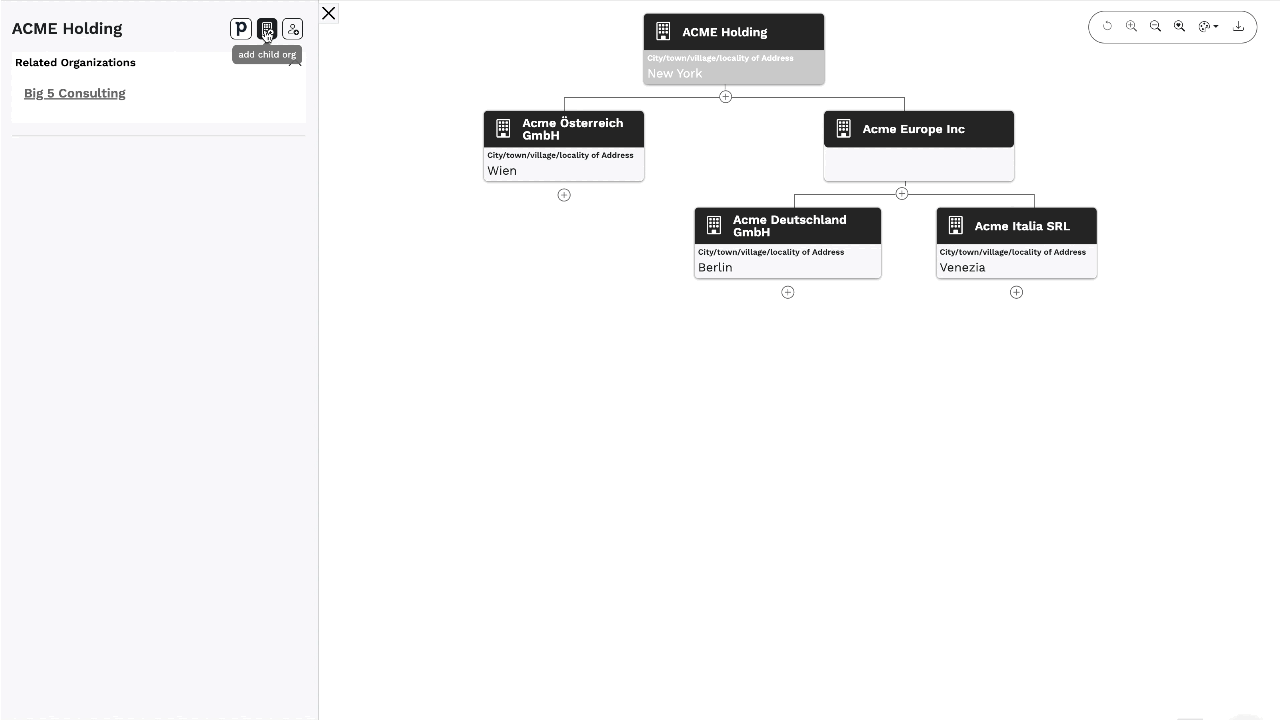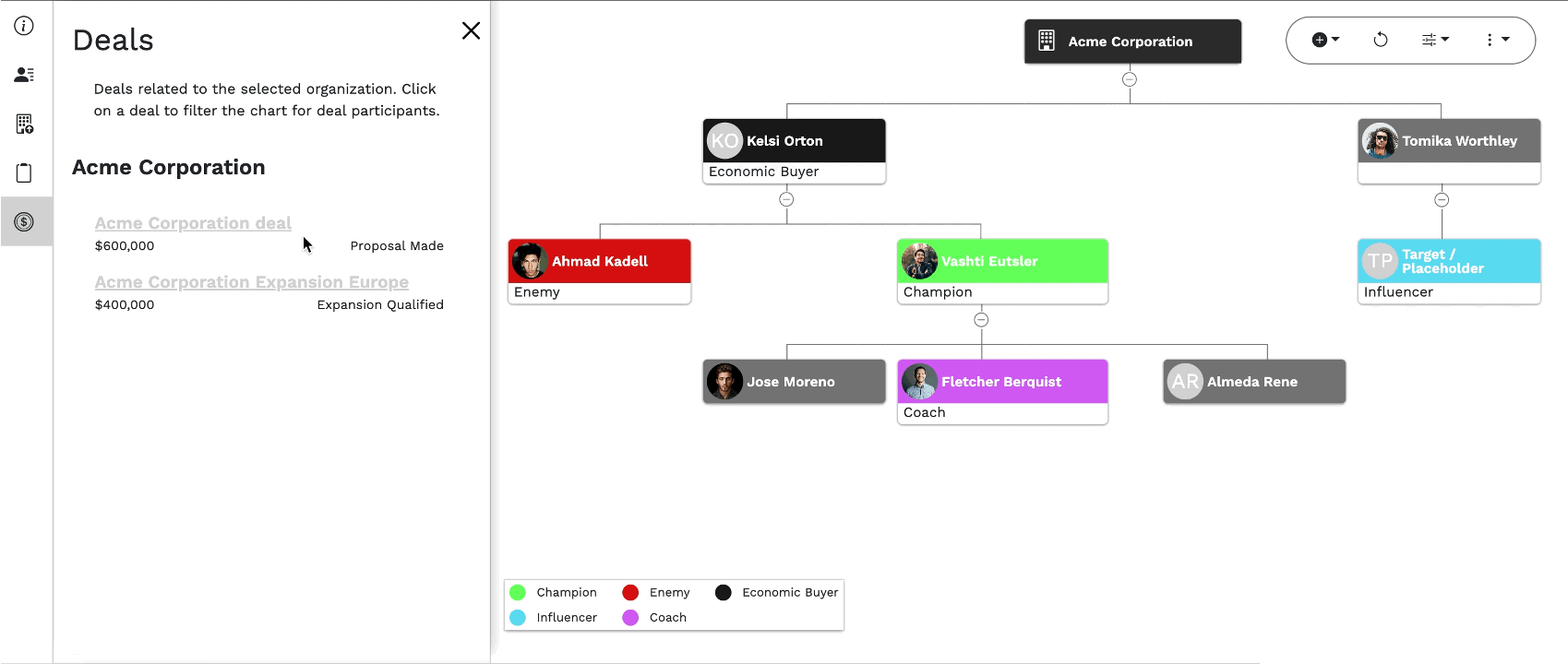Up & Cross-Selling in the Enterprise Segment
TL;DR
Expanding business with the largest customers through up- & cross-selling can be a strong sales motion with unique challenges:
Cross-functional visibility from sales to delivery needs to be maintained to identify opportunities
Multiple opportunities at various stages need to be coordinated
Dynamic stakeholder relationships need to be understood to manage sales campaigns
How vizrm helps: With org charts that feature related organizations, deal filters, and activity heat maps, vizrm enables better account visualization, cross-functional collaboration, and streamlined management of up- and cross-sell opportunities.
Up- and Cross-Selling
Usually, your largest customers also present the biggest opportunities for expansion motions, the most prominent of which are up- and Cross-Selling.
Up-Selling (🍔 x 2)
Up-selling involves encouraging a customer to either upgrade to a higher-tier version of a product or purchase more of the same product. For instance, if a client is already using a basic software package, up-selling could mean moving them to a premium version with more features or increasing the number of licenses for wider usage across their organization.
Cross-Selling (🍔 + 🍟)
Cross-selling, on the other hand, focuses on offering complementary products or services that the customer hasn’t yet considered but could benefit from alongside their current purchase. For example, while up-selling might mean moving a client to a premium plan, cross-selling would mean introducing related solutions and creating a broader value package.
Both strategies are essential in maximizing account growth, yet each requires a tailored approach based on customer needs and organizational structure.
Challenges
While your enterprise customers may pose the biggest opportunity for expansion sales, the complexity that comes with these accounts also increases, leading to certain challenges when planning & executing up- & cross-sales:
Lack of Cross-Functional Visibility: Sales executives don’t always have insight into what professional service and customer success representatives uncover in their day-to-day interactions with customers. This lack of visibility means that valuable opportunities for up-selling or cross-selling may be missed simply because the right information isn’t reaching the sales team.
Managing Multiple Opportunities at Different Stages: Large accounts often have numerous active opportunities at various stages—some in early discovery, others in solution definition, and others in negotiation. Keeping track of all these opportunities within a large account is complex and typically requires substantial manual effort from account managers, diverting focus from strategic tasks.
Fragmented Understanding of Stakeholder Relationships: A traditional CRM can feel limited with large accounts, as it often presents only a static list of contacts without context on the relationships between them. Without a clear visualization, it’s challenging for account managers to grasp the true network of interactions within the account. In contrast, vizrm visually represents the organization, enabling sales teams to easily understand who is engaged with whom and to overlay sales opportunities directly from the CRM for a complete picture.
How vizrm supports Up- and Cross-Selling
The entire process, from identifying expansion opportunities to creating an execution plan and executing collaboratively as a cross-functional team, becomes easier using vizrm:
vizrm provides insights into the corporate structures of large enterprises, revealing how subsidiaries and departments interact. This understanding enables sales teams to identify opportunities for up-selling the same product in different areas of the corporation.
By visualizing relationships within a customer organization, vizrm supports sales teams in positioning additional products effectively, facilitating cross-selling efforts.
As a collaborative tool, vizrm allows cross-disciplinary account teams - including sales, business development, professional services, and customer success - to track their networks and relationships within an account collectively.
Best practices using vizrm for Expansion Sales
Here are some best practices to leverage vizrm’s capabilities when expanding your business with customer accounts:
1) Leverage Organizational Charts for Structural Insights
vizrm’s organizational charts provide a comprehensive view of the general structure of large accounts. This visibility is essential for understanding the layout of departments and key players, helping sales teams tailor their up- and cross-selling strategies. Make sure to use our Account Mapping Best Practices.
2) Use Related Organizations for Subsidiary Visibility
The Related Organizations feature is particularly valuable for up-selling into different subsidiaries. By mapping out related entities, vizrm helps sales teams identify areas where their primary product or service could benefit additio
3) Manage Multiple Deals with Deal Filters
Large accounts often involve multiple ongoing deals at different stages, from discovery to negotiations. vizrm’s Deals Filters enable account managers to organize and prioritize these deals efficiently, reducing the operational load of manual tracking and helping teams focus on high-impact opportunities.
4) Identify Engagement Patterns with Activity Heat Maps
The Activity Heat Maps feature in vizrm allows teams to see where engagement occurs within the account, a crucial insight when working with a cross-departmental team. Activity heat maps help sales professionals understand which areas are already well-engaged and where additional relationship-building may be needed.
5) Establish an Operating Rhythm for Account Reviews: Maintaining a consistent review rhythm is crucial for staying aligned across teams. Setting up a monthly or quarterly review meeting to discuss progress and refine strategies is a general best practice for strategic accounts. Use Org-Chart views, Activity Heat Maps, and Deals Filters during the meeting to reduce preparation overhead and keep everyone on the same page.
6) Celebrate Wins as a Team: Celebrating account successes is essential to foster a collaborative and motivated environment. Recognizing wins, such as successful up-sell or cross-sell achievements, helps build morale and reinforces a culture of shared accountability across the account team.





